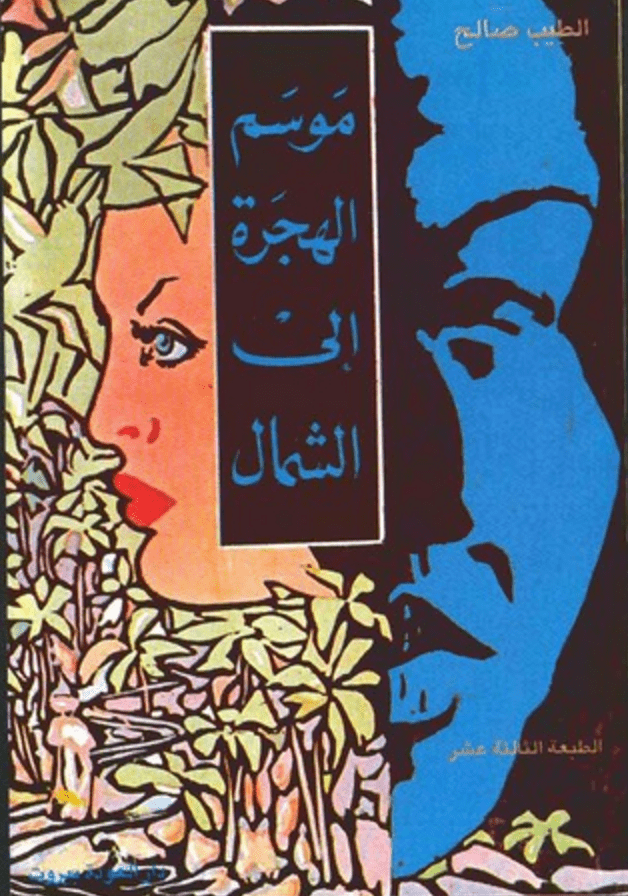 Seasons of Migration to The North
Seasons of Migration to The North


“What race are you, are you Arab or African?
I’m like Othello, Arab African.”
Tayeb Salih‘s novel Seasons of Migration to the North deals with one of the most perplexing issues dominating contemporary culture, the issue of identity. The typical story of migration to the West is reversed here. The journey back home becomes one of obscurity born out of the residue of its imperial legacy, charted through the experiences of the novel’s nameless narrator and a familiar stranger he encounters called Mustapha Sa’eed. The narrator and Sa’eed belong to two different generations of the Sudanese middle class. The former experiences migration in the early years of self-ruling Sudan, the latter retells his journey in the form of recollection, in the backdrop of a British occupied Sudan. This all retold from the narrator’s perspective as well, as the narrator splits between reflections on the past and observations on his present.
The novel opens with the narrator’s return home to Wadi Han in Sudan after spending years abroad studying the works of an ambiguous European poet. Both the reader and the narrator are led to believe at the start that all is good, years of hijra and distance endured by the narrator are merely externalities, conditional changes that had to be done for the sake of the enrichment of his intellect, to fulfill national quotas of literacy and employment. The narrator sinks deeper into his nostalgia, into mental images of his childhood which reassure him that as of now, things can only become better. He looks at the palm tree of his childhood home and calms his still unrealised anxieties , saying: “All was still well with life. I looked at its strong straight trunk, at its roots that strike down into the ground, at the green branches hanging down loosely over its top, and I experienced a feeling of assurance.” (2)
This alters upon his acquaintance with Mustpha Saeed, a man who settles in the village of Wadi Han as a farmer from Khartoum. He is drawn to him at first on account of his silence, amidst the outpouring of questions from friends and family on the illicit ways of the “afrenja”. Saeed’s unwillingness – even on a performative level – to engage with the marvel of his cultural embark, shrouds the narrator’s perception of him with suspicion. The two become more acquainted as time passes, but the narrator’s suspicion remains unsatisfied. Until Sa’eed slips one drunken night and recites a lengthy English poem without a fault. The narrator later forces Saeed into confrontation and is met with a side to Saeed that’s far less wholesome to the reality he has been intending to project. Throughout the story we are told very little about the narrator’s experience abroad, it centers around Saaed’s violent, sexualised and turbulent fable of hijra, where he “unleashes ritual violence on himself, on European women, on the narrator’s understanding.” Saeed’s experience, contrary to the narrator, represents a negative side of cultural miscegenation, a hybrid who is unable to transcend the negative effects of colonialism and by consequence internalizes it’s violence. It’s the colonial legacy of domination that impacts him beyond anything else, a legacy that the narrator suppresses with visual re-assuresaunces, but Seaad’s story mounts on his consciousness and as the novel progresses, we come to see that through Saeed the narrator gains an understanding of his own reality. Seaad’s past is not completely detached from the narrator’s present, the continuity of cultural contamination exists still. Disturbing his at first calm, hopeful aspirations of a better Sudan. Seaad’s life story becomes an obsession to the passive narrator who although takes on a job at the ministry of education grows increasingly detached and hollow, as he comes to accept the limitations and futility of his contributions in light of the reality of a landscape that’s unfit for cultivation. A mere observer of slow deduction. The narrator laments: “What had happened to Mustafa Sa’eed could have happened to me?” (49) and then momentarily, he starts to see the reflection of Saeed in the mirror before him, lit by the dim light of a candle.
In the novel, the issue of identity is an especially complex one. Saeed and the narrator struggle to define themselves within rigid compartmentalisations of black or white, European, African or Arab when discourses of colonialism have communicated spheres of self determination even long after the colonizer’s departure. Seasons of Migration To The North makes readers re-consider the impact of cultural hybridity, of cultures in contact, specifically in the case of post-colonial narratives. How much violence is suppressed in the years post “liberation”? How much of it translates to contemporary anxieties and concerns on identity as we steadily drift towards a more transnational understanding of our existences? Where is the line drawn between cultural hybridity and cultural amnesia? In the story, the narrator is forced into remembrance and it’s unclear whether this resurgence into the best is beneficial or not, it remains an open ended question of progress that’s led by factors both external and internal to his development. The narrator would like to believe that the new generation of Sudanese youth are now descahkled and have become masters of their own faiths, but Sead’s dark legacy premnates the narrator’s optimism, it forces him into confronting unexplained dreads, that don’t live within the narrator but in the soil, the date tree of his childhood home, and the very land that is host to all his memories, the imaginary of them and the truthful.


 Seasons of Migration to The North
Seasons of Migration to The North 

